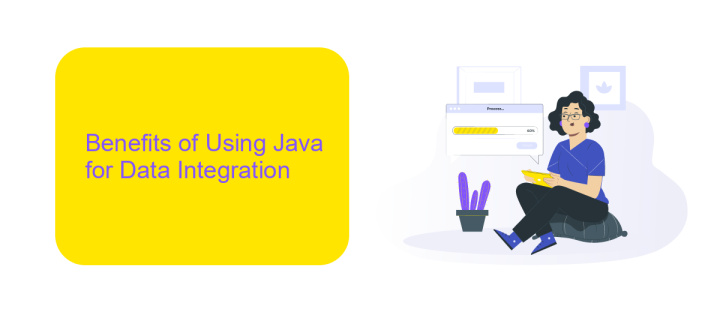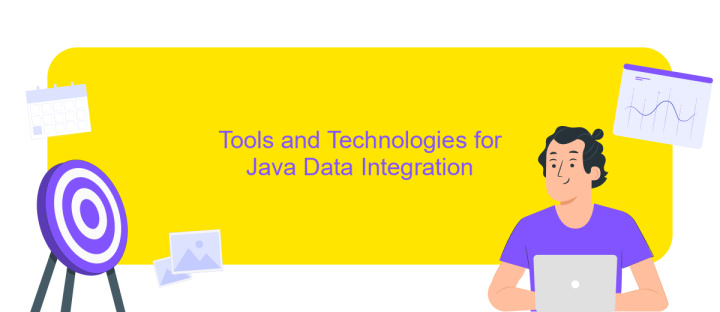Java Data Integration
Java Data Integration is a critical aspect of modern software development, enabling seamless communication and data exchange between diverse systems and applications. By leveraging Java's robust libraries and frameworks, developers can efficiently integrate data from various sources, ensuring consistency, accuracy, and real-time accessibility. This article explores the key concepts, tools, and best practices for achieving effective data integration using Java.
Introduction to Java Data Integration
Java Data Integration is a crucial aspect of modern software development, enabling seamless communication between various data sources and applications. It facilitates the consolidation, transformation, and synchronization of data across different platforms, ensuring that information is consistent and up-to-date. By leveraging Java's robust ecosystem, developers can create efficient and scalable solutions for data integration challenges.
- Data Consolidation: Combining data from multiple sources into a single, unified view.
- Data Transformation: Converting data into a suitable format for analysis or processing.
- Data Synchronization: Ensuring data consistency across different systems and platforms.
With Java Data Integration, businesses can improve their decision-making processes by having access to accurate and timely data. The flexibility and power of Java make it an ideal choice for building custom data integration solutions that can adapt to the evolving needs of organizations. Whether integrating legacy systems or modern cloud services, Java provides the tools and frameworks necessary to achieve seamless data integration.
Benefits of Using Java for Data Integration

Java offers a robust and versatile platform for data integration, providing numerous benefits to developers and businesses alike. One of the primary advantages is its platform independence, which ensures that Java applications can run on any system with a compatible Java Virtual Machine (JVM). This feature greatly simplifies the integration process across different operating systems and hardware configurations. Additionally, Java's extensive library ecosystem, including frameworks like Apache Camel and Spring Integration, provides powerful tools for handling complex data workflows, reducing development time and effort.
Furthermore, Java's strong typing and object-oriented principles enhance code maintainability and scalability, making it easier to manage large-scale data integration projects. The language's inherent security features also help protect sensitive data during integration processes. Services like ApiX-Drive can further streamline Java-based data integration by offering pre-built connectors and automated workflows, allowing developers to quickly set up and manage integrations without extensive coding. Overall, Java's combination of platform independence, rich libraries, and strong security makes it an ideal choice for efficient and reliable data integration.
Tools and Technologies for Java Data Integration

Java Data Integration involves the use of various tools and technologies to efficiently manage and integrate data from multiple sources. These tools facilitate seamless data exchange, transformation, and storage, ensuring that data is accurate, consistent, and readily available for analysis and reporting.
- Apache Camel: An open-source integration framework that provides a standardized way to integrate various systems using enterprise integration patterns.
- Spring Integration: A part of the Spring framework, it offers a comprehensive set of tools for building enterprise integration solutions using Java.
- Apache Kafka: A distributed streaming platform that enables real-time data integration and processing across multiple systems.
- Talend: An open-source data integration tool that simplifies ETL (Extract, Transform, Load) processes and supports various data sources.
- MuleSoft: A widely-used integration platform that facilitates the connection of applications, data, and devices with APIs.
By leveraging these tools and technologies, developers can create robust and scalable data integration solutions in Java. These tools not only streamline the integration process but also enhance data quality and accessibility, making it easier to derive actionable insights from integrated data.
Best Practices for Java Data Integration

When integrating data in Java, it's crucial to follow best practices to ensure efficient and reliable processes. Start by clearly defining your data integration requirements and objectives. This helps in selecting the right tools and frameworks that align with your project's needs.
Next, prioritize data quality and consistency. Implement validation checks and cleansing routines to maintain the integrity of your data. This step is essential to avoid issues down the line that could disrupt your integration workflows.
- Use robust error handling to manage exceptions and failures effectively.
- Leverage multi-threading and parallel processing to enhance performance.
- Adopt standardized data formats like JSON or XML for better interoperability.
- Ensure secure data transfer by using encryption and secure protocols.
- Regularly monitor and audit your data integration processes.
Finally, document your integration processes thoroughly. Comprehensive documentation aids in maintaining the system and onboarding new team members. By adhering to these best practices, you can achieve a seamless and efficient Java data integration experience.
Case Studies and Applications of Java Data Integration
One notable case study of Java data integration involves a retail company that needed to synchronize its e-commerce platform with its inventory management system. By leveraging Java-based integration tools, the company successfully automated the data flow between the two systems, ensuring real-time updates of stock levels and order statuses. This integration not only improved operational efficiency but also enhanced customer satisfaction by providing accurate information on product availability.
Another example is a financial institution that utilized Java data integration to consolidate data from various banking systems into a unified data warehouse. This enabled the institution to perform comprehensive data analysis and reporting, leading to better decision-making and regulatory compliance. Services like ApiX-Drive facilitated the integration process by offering pre-built connectors and an intuitive interface, reducing the time and effort required for setup. This approach allowed the institution to focus on data insights rather than technical complexities, ultimately driving business growth.
FAQ
What is Java Data Integration?
Why is data integration important in Java applications?
What are some common challenges in Java Data Integration?
How can I automate Java Data Integration tasks?
What are best practices for ensuring data quality in Java Data Integration?
Apix-Drive is a simple and efficient system connector that will help you automate routine tasks and optimize business processes. You can save time and money, direct these resources to more important purposes. Test ApiX-Drive and make sure that this tool will relieve your employees and after 5 minutes of settings your business will start working faster.

